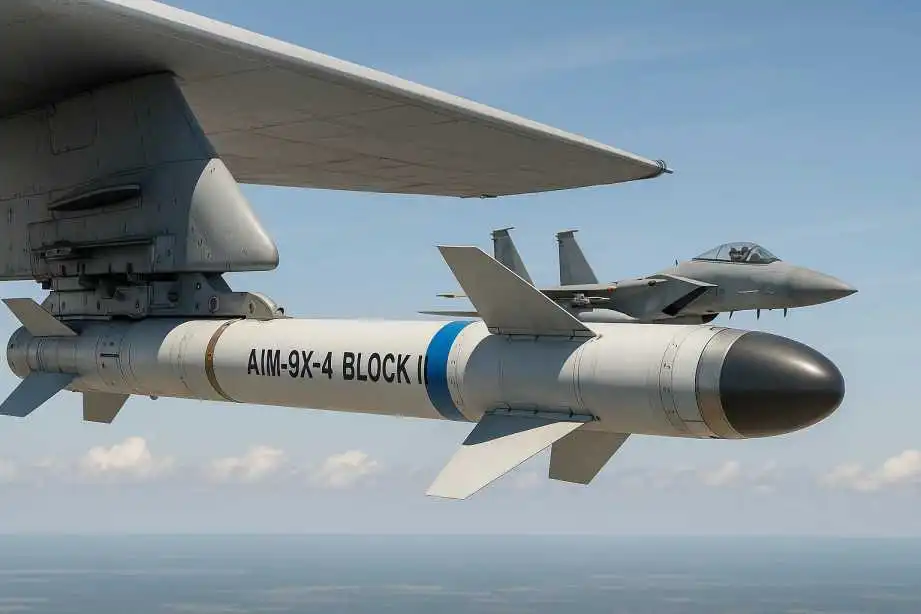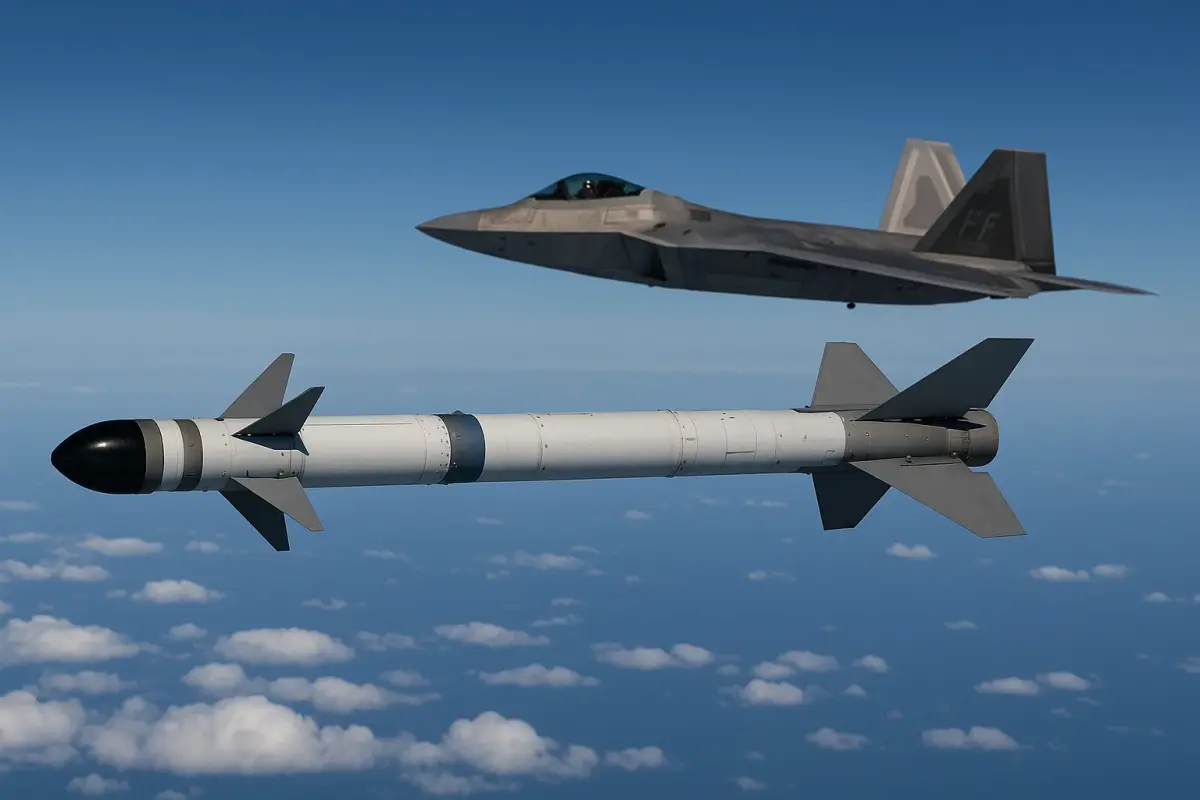
Why the AIM-9X-4 Block II Missile Procurement Matters for Future Air Combat?
In the ever-evolving world of air combat, technology plays a crucial role in determining which side has the upper hand. As adversaries develop more advanced aircraft, drones, and missile systems, staying ahead means investing in the latest innovations.
One such advancement is the AIM-9X-4 Block II Sidewinder missile, a modernized air-to-air weapon that's catching attention in defense circles. But why does its procurement matter so much for the future of air combat? Let’s break it down.
Why the AIM-9X-4 Block II Missile Procurement Matters for Future Air Combat?

The AIM-9X has a place to the family of AIM-9 Sidewinder short-range rockets created by Raytheon, a resistance temporary worker and a trade unit of the resistance company RTX. It is an infrared air-to-air rocket basically created for the US Discuss Drive (USAF) and the US Naval force.
Read Also: What Is the Best Fighter Aircraft in the World?
The AIM-9X Sidewinder rocket is in benefit with more than 24 nations around the world and is provided to North Atlantic Settlement Organization (Nato) part nations, as well as other US-allied countries. The AIM-9X Piece II rocket was terminated from the National Progressed Surface-to-Air Rocket Framework (NASAMS) launcher for the to begin with time in May 2019.
A Quick Look at the AIM-9X-4 Block II
The AIM-9X is a short-range, infrared-guided missile known for its agility, precision, and reliability. It’s part of the well-established Sidewinder family, which has been in service for decades. The Block II variant brought major upgrades, such as lock-on after launch (LOAL), better electronic counter-countermeasures (ECCM), and improved seeker performance.
Now, the Block II+ or AIM-9X-4 represents the next step in that evolution. While many technical details remain classified, what's clear is that this version enhances lethality, survivability, and integration with next-gen platforms like the F-35 and F-22.
Why Procurement Now Matters?

1. Preparing for Near-Peer Conflict
For the past two decades, U.S. air power has mostly faced asymmetric threats—insurgents with little or no air capability. But the future is shifting toward near-peer conflicts with countries like China or Russia. These nations are fielding advanced fighters like the J-20 and Su-57, along with sophisticated electronic warfare systems.
Related Article: Terminal High Altitude Area Defense Thaad System: What So Far?
To counter these threats, the U.S. needs missiles that can outthink and outmaneuver enemy systems. The AIM-9X-4 Block II is built with these scenarios in mind, offering smarter target tracking and better performance in cluttered, contested environments.
2. Full Integration with 5th-Gen Fighters
The F-35 and F-22 are stealthy and networked, but a fighter is only as good as its weapons. The AIM-9X-4 is designed to seamlessly integrate with these platforms, taking advantage of their sensors and datalinks. This allows pilots to fire "off-boresight" (without pointing directly at the target), using the missile’s internal systems to home in even after launch.
This integration increases engagement flexibility, especially in complex dogfight or multi-threat scenarios, where every second counts.
3. Deterrence Through Modernization
Simply put, having cutting-edge technology deters potential enemies. By publicly committing to the AIM-9X-4 procurement, the U.S. sends a strong signal: it’s ready for tomorrow’s battles.
Investing in advanced weapons also helps maintain air dominance, a cornerstone of modern U.S. military doctrine. Without it, ground forces and naval units become more vulnerable. The AIM-9X-4 plays a role in maintaining this strategic edge.
Beyond Just Firepower: A System-Level Upgrade
It’s easy to think of a missile as just a projectile. But in today’s battlespace, weapons are part of a much larger kill web—a system of systems that includes satellites, radar, drones, and cyber assets.
The AIM-9X-4 fits into this new model. It’s not just about speed and range; it’s about data. This missile likely features better two-way communication, enhanced target discrimination, and resilience against jamming. All of this supports multi-domain operations, where air, land, sea, and cyber forces work as one.
Challenges Ahead
Of course, with every major procurement come challenges. Cost, supply chain issues, and integration with legacy systems can slow things down. Additionally, adversaries are not standing still; they’re improving their own missile defense systems and electronic warfare capabilities.
To ensure success, the Pentagon must ensure on-time delivery, interoperability, and rigorous testing of the AIM-9X-4. Only then can it become a true force multiplier.
AIM-9X Sidewinder Plan and Features
The AIM-9X joins an spry pushed, vector-controlled airframe. It employments a high-performance gazing central plane cluster sensor and coordinating components such as a rocket engine, a warhead, and a combine of AIM-9M. The computerized plan engineering of the rocket can adjust upgrades for future requirements.
The rocket has a length of 3m, a distance across of 12.7cm, a blade span of 44.4cm, a wingspan of 35.3cm and weighs roughly 85kg. It can carry a 9.36kg annular impact fracture warhead to a run of more than ten miles.
AIM-9X can be coordinates with a wide run of flying machine, counting the E/A-18G, F/A-18C/D, F-15, F-15C, F/A-18E/F, F-15E, F-16, F-22 and F-35 models. The rocket is too consistent with the NASAM, LAU-7 and LAU-12X arrangement launchers.
Final Thoughts
The AIM-9X-4 Block II Sidewinder isn’t just an upgrade—it’s a reflection of where modern air combat is heading. With faster reaction times, smarter sensors, and deeper integration with fifth-generation aircraft, this missile is poised to play a critical role in ensuring U.S. and allied air superiority in the years ahead.
Procurement now means readiness later. In a future where wars may be decided in minutes, or even seconds, having the right tools in the skies could make all the difference.
 The Defence Blog
The Defence Blog